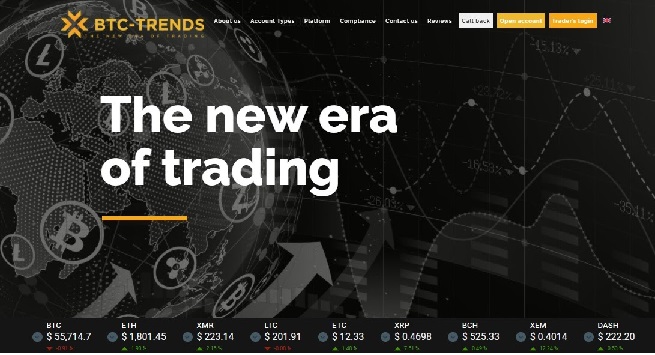Bitcoin drop over the last two years led many to question the future of the world’s most popular cryptocurrency. Since its creation in 2009, bitcoin prices have been jumping up and down like nothing ever seen before. Sceptics used to say that with such volatility no currency can expect a long lifespan.
At first, being a relatively small phenomenon, bitcoins cost nothing. People used to buy them in thousands just for fun. In a few years’ time, however, the situation drastically changed. As the result of Asian market hype and some cyber exchange cheats, in late 2013 the price rocketed up to about $1200 for one coin. It was competing in value with an ounce of gold. We saw it all: overnight millionaires, who suddenly discovered a long forgotten stash of bitcoins on their hard drives. And others, who had mindlessly dumped their old PCs with ‘toy money’ stored inside only to find themselves in a desperate situation of fortune forever lost.
The price bubble burst very soon, however, with subsequent fall below the modest $400 in April 2014. This gave rise to serious claims that bitcoin is dead. Well, it was not true. There would be more rises and crashes, and sloping further down to the current $220-240 range. But for sure these wild fluctuations could not but undermine the original enthusiasm and confidence of bitcoin users.
So what about volatility?
As a digital currency with no central backing, bitcoin has always been very sensitive to internal and external impacts. Because no laws anywhere support its monetary status, bitcoin is often considered a commodity rather than money. And in a typical manner of a commodity, its price heavily depends on demand and supply. This opens doors, among all other dangers, to extensive price manipulations.
The truth is the majority of early bitcoin enthusiasts, both trading and running exchanges, had little to no experience in finances. Exchanges were hacked, swarmed by bots, overrun by shadowy ‘over-the-counter’ trade – there are many ways to make the market dance to the tune. No wonder price bubbles grew and burst too easily. Of the four major crises in the bitcoin history three, in 2011, 2013 and 2014, were merely the result of massive market overvalue.
Another reason for its sudden ups and downs is bitcoin falling victim to its own mythology. Security and anonymity have been the cornerstones of its fame from the beginning. Both were compromised. The bitcoin protocol itself is extremely hack-proof, but virtual exchange platforms are not so. And for an average bitcoin user the difference between the two may be not quite obvious. That is why every successful security breach and every revealed vulnerability in the system came as a blow to its very core. The disgraceful collapse of Mt. Gox, once world’s largest bitcoin exchange, fallen prey to hackers and to its own gross mismanagement, is a perfect example. Nearly 900,000 BTC were admittedly lost in that mess and the price spiralled down below $100. The epic story was echoed, on a more modest scale, by the Bitstamp hack, which triggered another price crisis early in 2015. The market is always prone to overreacting and the demand is ready to drop.
On the other hand, bitcoin has never been short of external support. The ideology is really appealing. Every recent financial crisis in Europe, like Cypriot in 2013 or Greek in 2015, called upon ‘money without banks’ as the last resort for private savings. Multimillion investments into hardware mining also helped to reinforce the image of cryptocurrency and prove its worth to big players. Now, despite all recent market turbulence, major companies like Microsoft and PayPal are turning bitcoin-friendly. Local governments like Germany and the UK start to acknowledge, if reluctantly, bitcoin as a financial instrument.
Rules are changing
Still, momentary fluctuations due to unexpected factors are one thing, while slow but steady bitcoin decline over the last two years is something completely different. The most recent crisis occurred early in 2015. The price suddenly dropped, albeit for a short time, by 40% and hit the minimum since the November 2013 hype. This crisis, when its origins were analysed, revealed something important about bitcoin changing its nature.
First and foremost, mining has entered a new phase now. With constantly increasing difficulty, forced up by new big players on the market, the old-school GPU mining is nearly obsolete. Industrial scale ASIC farms rule the day, using hardware specifically designed for bitcoin generation. On the pick of the 2014-15 mining rush new companies attracted tens of millions in investments. However for many of them sagging prices made repayments much harder than expected. Some of the companies were reported to dump massive bulks of their bitcoin reserves, which inevitably dropped the prices even more. If true, this could seriously contribute to the positive feedback loop which apparently stands behind the long price slide. Besides, next halving of bitcoin block reward (i.e. from 25 to 12.5 BTC) is due in 2016, which makes the future of mining even less predictable. In this climate miners would hardly be choosing to stash their bitcoins waiting for the next price bubble, which may never occur.
This leads up to yet another important aspect of current bitcoin decline. The markets are less 'bubbly' these days, the price, though within a long negative trend, remains relatively stable. Many see this as the sign that the 'speculation' phase in the bitcoin history is over. It is no longer out there for exchange trickery, it is there for people and goods. Admittedly millions of people now have bitcoins in their possession, and more and more businesses start to accept them in payment. While merchants are eager to use technical advantages of cryptocurrency, they are not interested in gathering large amounts of bitcoins just to sit on them. What they want is fiat money to pay rents, taxes, to buy supplies, services etc. Therefore, the more bitcoins circulate as real money, the more the supply is, the lower is the price.
The entrance of bitcoin into real life economy can only be praised. Isn’t it what it was intended for from the beginning? However it inevitably makes the cryptocurrency liable to all perils of the big world. And so it happened that bitcoin is hatching out of an egg at a time of world economic crisis. Now more than ever its value is affected by things like fiat currency inflation, purchasing power, per capita income, you name it. In simple words, even those who have constant income in bitcoins (miners, traders etc.) may be forced by today’s circumstances to sell them off to survive.
Tell me the future
Even optimists admit that this downward dynamics will carry on for some time. Hopefully, with increasing number of services and customers involved, dedicated bitcoin economy will soon grow strong enough. It will allow a mass of bitcoins to circulate freely within its own ecosystem, thus stabilising the price.











